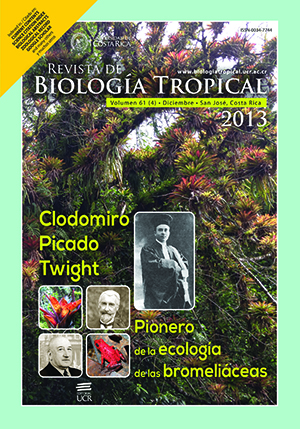Abstract
Different biotic and abiotic factors determine the fatty acid (FA) composition of fish tissues and organs. This information is useful for humans due to the fact that fish consumption is associated with health benefits. The aim of the present study was to identify the variation in the concentration of fatty acids, according to different factors, among ten edible marine fish species in Mexico, collected from June to December 2009 in the largest fish market in Mexico city: Euthynnus alletteratus, Sciaenops ocellatus, Bairdiella chrysoura, Sphyraena guachancho, Symphurus elongatus, Istiophorus platypterus, Ophichthus rex, Eugerres plumieri, Eucinostomus entomelas and Oreochromis mossambicus. Lipid content was gravimetrically quantified, the fatty acids were determined using a gas chromatograph and the results were statistically analyzed. Total lipid content ranged from 0.93 to 1.95g/100g in E. entomelas and O. urolepis hornorum, respectively. E. alletteratus, B. chrysoura, S. elongatus, I. platypterus, O. rex and E. plumieri presented the following order in FA concentration: Polyunsaturated FA (PUFA)>Saturated FA (SFA)>Monounsaturated FA (MUFA). S. ocellatus, S. guachancho and E. entomelas presented SFA>PUFA>MUFA; and only O. mossambicus presented SFA>MUFA>PUFA. O. mossambicus had the highest concentration (mg/100g) of SFA (559.40) and MUFA (442.60), while B. chrysoura presented the highest content (mg/100g) of PUFA (663.03), n-3 PUFA (514.03), EPA+DHA (506.10) and n-6 PUFA (145.80). Biotic and abiotic factors of the analyzed fish significantly influenced their FA concentration. Subtropical species presented 42.1% more EPA+DHA than tropical specie. Values presented here will vary according to the changes in the ecosystem and characteristics of each fish species, however the information generated in the present study is useful for improving fish consumption recommendations.Comments
Downloads
Download data is not yet available.






